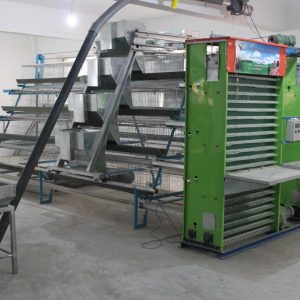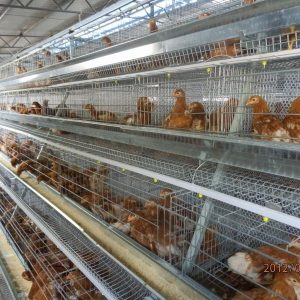
cage of chicken
cage of chicken Today, when bird flu is becoming more and more intense, everyone is paying attention to its development and spread. At the same time, more farmers are also experiencing physical and mental suffering. They are facing the double pressure of slow sales of live chickens and prevention of bird flu. Many farmers have done a good job of disinfection and vaccination in the prevention of avian influenza. However, the poultry polyculture has not attracted enough attention. Is it good or bad? Today I will discuss with you the current avian influenza. The pros and cons of polyculture.
Some people think that polyculture is a new topic in the breeding industry. This multi-level three-dimensional breeding mode is more superior than its single breeding. Polyculture can make full use of the space and ground of the breeding site. It saves labor and time in cleaning the shed compared with single breeding. At the same time, some can also use favorable factors, such as the polyculture of rabbits and chickens, chickens on the ground, chickens can eat Returning the wasted feed to rabbits saves feed to a certain extent. Practice has proved that the implementation of the business model of raising broilers on the rabbit farm can not only reduce the incidence of “feet dermatitis” and “mange disease” in rabbits and “fowl pox” in chickens. Moreover, the chickens raised on the rabbit farm have bright feathers and strong muscles.
This sounds true, and it is justified, so let’s take a look at the harm that polyculture will bring to the farm.
When talking about the prevention and treatment of highly pathogenic avian influenza, many experts mentioned that poultry farms should not mix poultry with chickens, ducks, geese and other poultry, nor should they be mixed with pigs. Non-polyculture here means that the same poultry farm should not Raise several kinds of poultry or pigs at the same time.
**, polyculture of poultry is not conducive to the arrangement of epidemic prevention plans for poultry farms.
Secondly, chicken farms should not raise ducks, geese and other waterfowl
Some diseases mainly occur in certain poultry, but under certain conditions, other poultry can also be infected, such as Newcastle disease in chickens, sometimes ducks, geese, pigeons and other poultry can also occur; in addition, some diseases are many poultry Co-morbidity, once a certain kind of poultry is first infected, it will quickly cause other poultry diseases, such as avian cholera, colibacillosis and avian influenza.
Avian influenza virus can infect many poultry and wild birds such as chickens, ducks, and geese. In particular, waterfowls are susceptible to avian influenza virus in the process of contact with external water sources, and some do not show any clinical symptoms, so various subtypes of influenza in waterfowl
The carrying rate of the virus is very high. The excreted feces contain a large amount of virus, which can infect chickens or other poultry, can cause the occurrence and epidemic of avian influenza, and cause serious economic losses. Therefore, chicken farms are not suitable for raising ducks and geese. Waiting for waterfowl.
Third, poultry should not be mixed with pigs
Research reports show that poultry influenza viruses can infect pigs, human influenza viruses can also be transmitted to pigs, and swine influenza viruses can be transmitted to both humans and chickens. Pigs may be in humans, pigs, and birds. Spreading
The role of a mixer or intermediate. It is particularly worth noting that, because influenza virus has 8 different nucleic acid fragments, when these two different virus particles co-infect the same cell of a certain animal (such as pig), the nucleic acid fragments will regenerate.
New combinations and arrangements produce new types of influenza virus particles. Can this new type of influenza virus particles form a pandemic to humans and cause great harm? Although we do not yet have very precise evidence that pigs are in the evolution of influenza viruses The mixer works, but we still have to be alert to this situation. Therefore, poultry farms should not raise pigs at the same time.
As of now, a total of 87 confirmed cases have been reported nationwide, of which 6 were cured and discharged, 17 died, and the remaining 64 are receiving treatment. Avian influenza in farms has not yet occurred, but the onset of avian influenza is very fast, and many poultry will die soon after seeing no symptoms. Therefore, birds should be kept separately.
**After the editor reminded farmers everywhere that they found that poultry died suddenly of unknown reasons, and they had been injected with Newcastle disease, infectious rhinotracheitis, infectious bronchitis before, and such epidemic prevention measures should be reported to animals as soon as possible. The epidemic prevention department is diagnosed by them.
Although there has not yet been a bird flu epidemic in farms, the current bird flu, given that different birds have different diseases and are prone to cross infection, it is recommended that farmers keep them separately.



